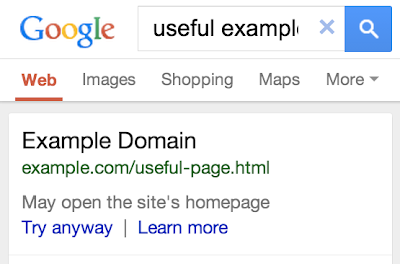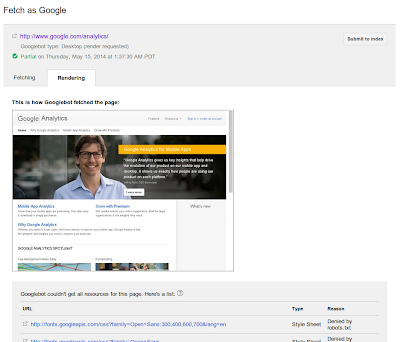Webmaster level: intermediate-advanced
Submitting sitemaps can be an important part of optimizing websites. Sitemaps enable search engines to discover all pages on a site and to download them quickly when they change. This blog post explains which fields in sitemaps are important, when to use XML sitemaps and RSS/Atom feeds, and how to optimize them for Google.
Sitemaps and feeds
Sitemaps can be in XML sitemap, RSS, or Atom formats. The important difference between these formats is that XML sitemaps describe the whole set of URLs within a site, while RSS/Atom feeds describe recent changes. This has important implications:
- XML sitemaps are usually large; RSS/Atom feeds are small, containing only the most recent updates to your site.
- XML sitemaps are downloaded less frequently than RSS/Atom feeds.
For optimal crawling, we recommend using both XML sitemaps and RSS/Atom feeds. XML sitemaps will give Google information about all of the pages on your site. RSS/Atom feeds will provide all updates on your site, helping Google to keep your content fresher in its index. Note that submitting sitemaps or feeds does not guarantee the indexing of those URLs.
Example of an XML sitemap:
<?xml version="1.0" encoding="utf-8"?>
<urlset xmlns="http://www.sitemaps.org/schemas/sitemap/0.9">
<url>
<loc>http://example.com/mypage</loc>
<lastmod>2011-06-27T19:34:00+01:00</lastmod>
<!-- optional additional tags -->
</url>
<url>
...
</url>
</urlset>
Example of an RSS feed:
<?xml version="1.0" encoding="utf-8"?>
<rss>
<channel>
<!-- other tags -->
<item>
<!-- other tags -->
<link>http://example.com/mypage</link>
<pubDate>Mon, 27 Jun 2011 19:34:00 +0100</pubDate>
</item>
<item>
...
</item>
</channel>
</rss>
Example of an Atom feed:
<?xml version="1.0" encoding="utf-8"?>
<feed xmlns="http://www.w3.org/2005/Atom">
<!-- other tags -->
<entry>
<link href="http://example.com/mypage" />
<updated>2011-06-27T19:34:00+01:00</updated>
<!-- other tags -->
</entry>
<entry>
...
</entry>
</feed>
“other tags” refer to both optional and required tags by their respective standards. We recommend that you specify the required tags for Atom/RSS as they will help you to appear on other properties that might use these feeds, in addition to Google Search.
Best practices
Important fields
XML sitemaps and RSS/Atom feeds, in their core, are lists of URLs with metadata attached to them. The two most important pieces of information for Google are the URL itself and its last modification time:
URLs
URLs in XML sitemaps and RSS/Atom feeds should adhere to the following guidelines:
- Only include URLs that can be fetched by Googlebot. A common mistake is including URLs disallowed by robots.txt — which cannot be fetched by Googlebot, or including URLs of pages that don’t exist.
- Only include canonical URLs. A common mistake is to include URLs of duplicate pages. This increases the load on your server without improving indexing.
Last modification time
Specify a last modification time for each URL in an XML sitemap and RSS/Atom feed. The last modification time should be the last time the content of the page changed meaningfully. If a change is meant to be visible in the search results, then the last modification time should be the time of this change.
- XML sitemap uses
<lastmod>
- RSS uses
<pubDate>
- Atom uses
<updated>
Be sure to set or update last modification time correctly:
- Specify the time in the correct format: W3C Datetime for XML sitemaps, RFC3339 for Atom and RFC822 for RSS.
- Only update modification time when the content changed meaningfully.
- Don’t set the last modification time to the current time whenever the sitemap or feed is served.
XML sitemaps
XML sitemaps should contain URLs of all pages on your site. They are often large and update infrequently. Follow these guidelines:
- For a single XML sitemap: update it at least once a day (if your site changes regularly) and ping Google after you update it.
- For a set of XML sitemaps: maximize the number of URLs in each XML sitemap. The limit is 50,000 URLs or a maximum size of 10MB uncompressed, whichever is reached first. Ping Google for each updated XML sitemap (or once for the sitemap index, if that’s used) every time it is updated. A common mistake is to put only a handful of URLs into each XML sitemap file, which usually makes it harder for Google to download all of these XML sitemaps in a reasonable time.
RSS/Atom
RSS/Atom feeds should convey recent updates of your site. They are usually small and updated frequently. For these feeds, we recommend:
- When a new page is added or an existing page meaningfully changed, add the URL and the modification time to the feed.
- In order for Google to not miss updates, the RSS/Atom feed should have all updates in it since at least the last time Google downloaded it. The best way to achieve this is by using PubSubHubbub. The hub will propagate the content of your feed to all interested parties (RSS readers, search engines, etc.) in the fastest and most efficient way possible.
Generating both XML sitemaps and Atom/RSS feeds is a great way to optimize crawling of a site for Google and other search engines. The key information in these files is the canonical URL and the time of the last modification of pages within the website. Setting these properly, and notifying Google and other search engines through sitemaps pings and PubSubHubbub, will allow your website to be crawled optimally, and represented accordingly in search results.
If you have any questions, feel free to post them here, or to join other webmasters in the webmaster help forum section on sitemaps.
Posted by Alkis Evlogimenos, Google Feeds Team












